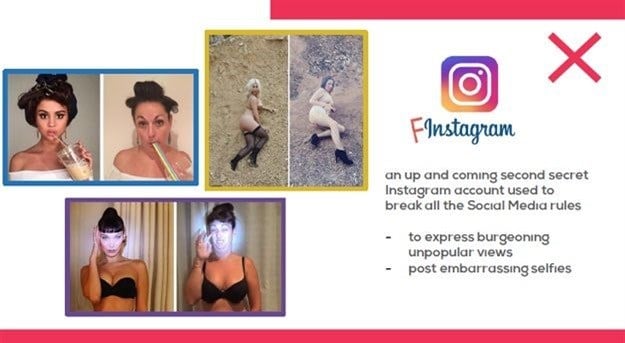






Of the earlier speakers’ sessions, Tembo said lots of the stats were hard-hitting, and if that’s the current context, we have to wonder how young people are actually surviving.
It’s all about making a choice and making the situation work for you, as best you can. Tembo then explained eight uniquely South African coping strategies young people are using, which are definitely making an impact:
Tembo explained that when you feel squeezed financially, you find ways to get by without those resources. So smart cuts are a short circuit or shortcutting of the established institutional procedures and practices, for their own benefit.
Especially in Africa, we know that in the absence of luxury, creativity is born.This usually takes the form of pirated content and data hacks through downloading and mainstream torrenting of music, movies, series and even books, often from hotspots that offer free Wi-Fi. They’re also changing their data settings, using free hotspots and multiple sim cards.
The youth are also resourceful in their spending power through laybyes, smart-shopping of their Christmas bonus, Uber sharing and sharing loyalty cards. They encourage their grandparents to get life cover with their names as the beneficiaries.

They are getting recommendations from ‘functional apps’ and social media and doing a lot of shopping online, but mainly for comparison, not necessarily to make the final purchase.
As a result, they’re also becoming discount kings and queens, using vouchers for discounts at every opportunity, but income is not necessarily a barrier for using this strategy.
It’s an evolution of the all-encompassing “peer group” to realising how your day-to-day community is vital to your survival.
This signals the re-emergence of Ubuntu, within a modern-day context, with youth fostering neighbourhood collaborations and co-operation over individualism and competition.It links to the concept of not making new friends unless that person has a very specific purpose of your life or comes from your community, as social media has made us cautious.

On the positive side, youth use social media networks for events and to get a bird’s eye view. It’s also seen a rise of opportunity networks based on what you know about who you know, and special interest networks like Social Coding ZA, a female-first coding community in Pretoria that’s helping to contribute to the skills gap.
There are also subculture networks, like drag racing, female boxing, skateboarding and fixie bikes. Tembo says for marketers to note that it’s harder to start a wave of something cool, and to rather support what’s already there, like how I See A Different You (ISADY) is telling the South African story from their own positive perspective.
Today’s unforgiving social and economic environment places youth under an immense amount of pressure to develop richly curated, multi-faceted and diverse online and offline personas.
The implication here is that if you’re targeting consumers based on their social image, those may not be who they truly are, as you can be whoever you want to be, on any platform, at the same time.There’s a fluidity too, with brands now under the magnifying glass, purely because individuals are self-branding as social media is free advertising or free marketing that they can play with, so they are also playing the game.
Tembo spoke of that identity continuum as the intersectionality of being a global citizen, African, gender, sexuality, country, race, South African and mindset. This includes gender fluidity and the Bonang-inspired ‘Sophisti-ratchett’, defined as ‘turning up, whilst maintaining a certain level of class.’
There's also an increasing need for anonymity and 'fake profiles'...

Think of the implications of this for brand loyalty, with brand polygamy on the rise as there’s a need to be seen at every big event, so youth pledge social allegiance to one specific brand for the duration of an evening, before switching upon the next invite.
This is an attempt to combat digital fatigue, anxiety, stress and depression by managing your use of technology, whilst taking better mental and physical care of yourself.
It’s either a case of switching off when you get home as you’ve been online all day – even asking guests to lock their phones away while at your house – or accepting that you don’t have the self-control to stop checking those time-consuming apps and social media sites so deleting them, even though you love them.
In fact, 44% of respondents to the UCT Unilever Institute’s primary research, among a sample of 1833 18- to 24-year olds, say they have cut down on their social media use in the last 3 months. Some visit the library, not to source books but because they can’t use their phones there, so they can actually concentrate.

It’s a similar process to celebrities recovering from – and also not pre-empting – Twitter meltdowns by taking a digital detox. It’s also a case of using tech to avoid tech, like putting the Quality Time app front and foremost, deactivating the double blue ticks on WhatsApp, or only using your phone in flight mode so you don’t have full access to those data-heavy sites.
This is an awareness of the social implications of knowing what you can and can’t say, and should and should not be involved in. It’s the act of being socially conscious; particularly with regards to social causes.
It’s about realising that the world is bigger than you and that you need to have the right people around you.
This speaks to the importance of being informed and getting the uncontaminated news from Twitter, long before the filtered version on the 8pm TV broadcast.Only 6% felt their parents or guardians were more aware of contemporary social issues than them. Sustainability is a hot topic, and respondents are depressed about climate change and the planet’s health.
It’s about the inclusivity of gender, race, class and mindset, of knowing the correct name for the transgender community today is LGBTQI+.
The Ogilvy #NoExcuse ad and @CountryDuty Twitter account show this on the level of citizen duty and whistleblowing.
This is a move away from objects as the only aspirational quality, obviously affected by access to finances. Tembo said ownership of goods is becoming less attractive to today’s youth generation, who prefer to seek authentic and original experiences.
The current mindset is that today’s moments will last a lifetime through the internet, and status is now mainstream and democratised, so the youth would rather spend their money on travel, going to the beach, listening to music, or watching live sport that buying a ‘status symbol’ car.
This links to the growth of the events and services industry, especially in the townships.
Every second person you meet ekasi has an eventing business. This one runs a chesa nyama on Saturdays, this one throws a party at the club, this one has a clothing business that also runs events.
Highly related to the coping strategy of valuing experiences over things, Tembo said that as proven by Neethling, there’s just so much pressure on young people today that this coping strategy is an intentional detachment, in order to distract themselves from the real world. It’s about achieving momentary respite from those day-to-day challenges.
This takes both active and passive form – think of sport and the rise of streaming media – many don’t even own a TV to watch on – as well as dance culture and the debit-credit lifestyle young people are living.
Tembo says gaming is also an important form of escapism – think of the popularity of Pokemon Go – with second-hand gaming growing as a result.
Social hikes, urban bike clubs, creative arts and lifestyle football have also evolved and are no longer just for a specific demographic.
Tembo says this wraps up the case of the youth’s apathy to agency – seeing the rest of the world as not filling the gaps in their lives, so trying to do so themselves.
It’s a growing belief amongst the youth – inspired by the failings of previous generations – that the future will be built on their own individual efforts.This is linked to the entrepreneurship culture, as well as their belief in their own ability to change their own circumstances, and the resulting rise of the side hustle and flexibility in the workspace.
There’s also the double pressure to ‘earn and learn’ simultaneously, apathy to agency, and a rise of young MPs, taking back that power.
In conclusion, Tembo said the overarching point is that it definitely is environmentally difficult to be a young person today, facing so many pressures.
If you are marketing in that young space, you need to think of a ‘plan be’.Tembo shares the following as benefits for brands in dealing with these consumers, which need to be built on a foundation of their core needs:
1. Be real. Don’t downplay the pressures the youth of today are facing, just because you may not have grown up with them yourself. Inspiration is essential, but benefits need to be built on the foundation of core human needs.
2. Be fluid. One size does not fit all, the youth will not be boxed into labels. Their identities are built along a continuum of being vulnerable and resourced.
3. Be honest. Fake is easily exposed. Own up to mistakes, as the youth have an innate understanding of digital marketing and their own value as customers. Trust can’t be fudged and this generation has the capacity to help brands succeed or fail.
4. Be hopeful. Their hopes, dreams and goals are top of mind but the road is not clear and in most cases, unbuilt. The youth of today need you to believe in them and they need safe spaces and a hand up, not a hand-out.
5. Be proactive. It’s easy to be forgotten with all the brand clutter out there, so to stand out and be seen as different, we need to be visible. Youth used to ask ‘what can I do to have or use your brand?’ Now they’re asking ‘what have you done lately?’. Change must be intentionally driven to be effective.
6. Be brave. Don’t get caught up in the generational angst and what it constitutes to be a young person. Understand the age cohort or percentile, and be aware of the coping strategies they use. While this generation has unique and challenging identifiers, they’re resilient and in possession of coping strategies that provide multiple opportunities for brands. Take those opportunities.
That’s a wrap on my coverage of the UCT Unilever Institute of Strategic Marketing’s Youth Report 2018. Click through to the articles embedded throughout this article for more, and follow the Institute on Twitter for the latest updates.
